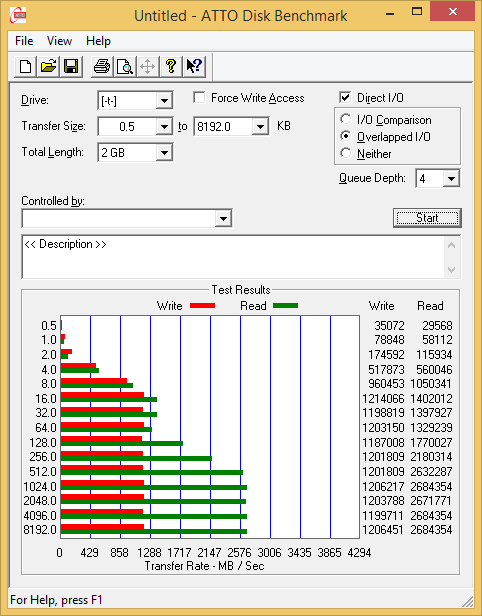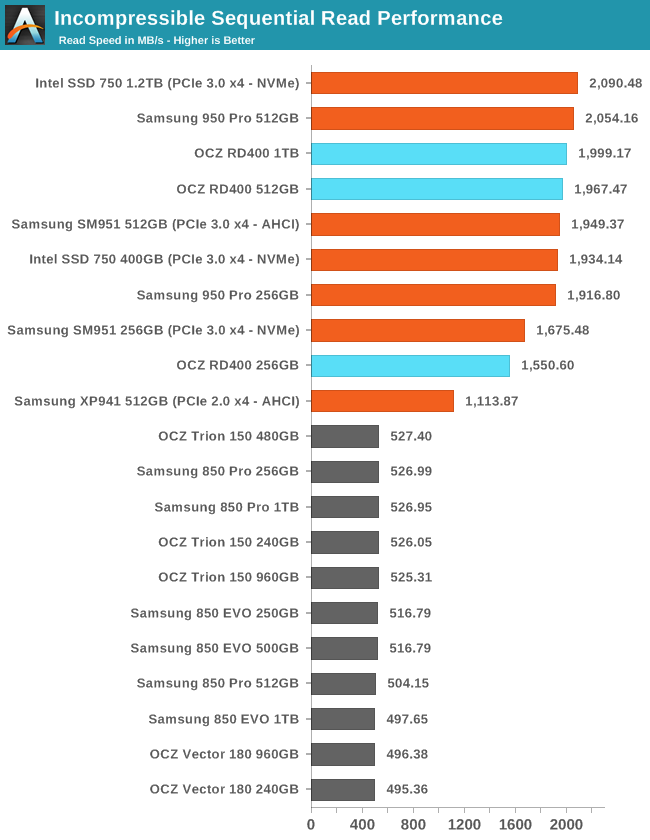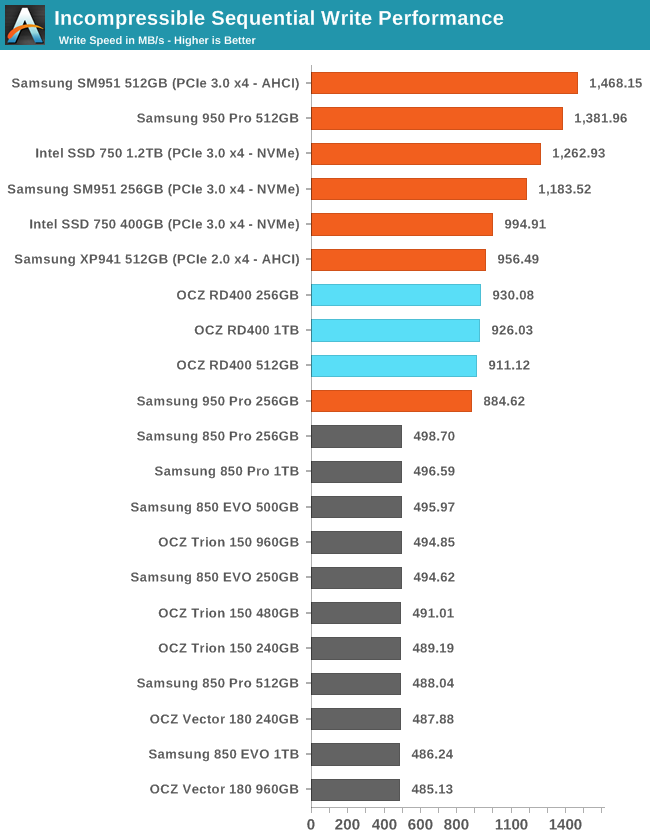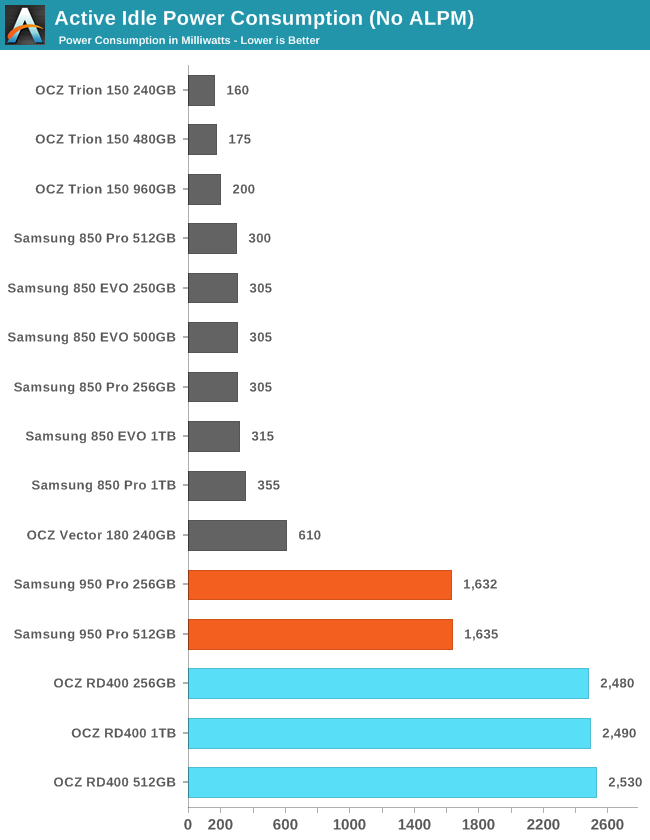The Toshiba OCZ RD400 (256GB, 512GB, 1TB) M.2 PCIe SSD Review
by Billy Tallis on May 25, 2016 8:02 AM ESTATTO
ATTO's Disk Benchmark is a quick and easy freeware tool to measure drive performance across various transfer sizes.
 |
|||||||||
The lower write speed of the 256GB RD400 is clearly visible. All three models show essentially no performance scaling from 16kB to 64kB transfer size but only reach full performance for 512kB or larger transfers.
AS-SSD
AS-SSD is another quick and free benchmark tool. It uses incompressible data for all of its tests, making it an easy way to keep an eye on which drives are relying on transparent data compression. The short duration of the test makes it a decent indicator of peak drive performance.


The 256GB RD400 lags a bit behind the competition for read speed and all three are near the bottom of the PCIe segment for write speed.
Idle Power Consumption
Since the ATSB tests based on real-world usage cut idle times short to 25ms, their power consumption scores paint an inaccurate picture of the relative suitability of drives for mobile use. During real-world client use, a solid state drive will spend far more time idle than actively processing commands. Our testbed's PCIe link state power management support is broken, so only active idle power consumption is reported. This is realistic for most desktop scenarios, but a properly configured mobile system can potentially save power by enabling link power management for PCIe and SATA.

The 12V to 3.3V conversion done by the PCIe to M.2 adapter card bundled with the RD400 is providing some overhead to idle power, but most of this poor showing comes down to a lack of usable PCIe power management on common desktop platforms.










40 Comments
View All Comments
AnnonymousCoward - Wednesday, May 25, 2016 - link
What about boot time. Is it slow like the Intel card?mervincm - Wednesday, May 25, 2016 - link
Intel 750 SSD isn't slow at boot anymore. Later SSD firmware and NVME drivers have really helped my boot performance.Yregister - Thursday, November 3, 2016 - link
But that's on Windows, correct? I read that the 750 doesn't work on a Mac, not bootable...moheban79 - Saturday, November 12, 2016 - link
Thats not true. I got my Intel 750 booting up my hackintosh. Should be doable.adamto - Wednesday, May 25, 2016 - link
Why there is no 2T or even 4T M.2 SSD?Silma - Wednesday, May 25, 2016 - link
Because there isn't enough place on the stick. One would need to develop much denser NAND.Billy Tallis - Wednesday, May 25, 2016 - link
A double-sided M.2 2280 can usually fit four packages of flash, each containing a stack of up to 16 dies that are typically 128Gb (16GB). That multiplies out to a practical limit of 1024GB for now. Newer 3D NAND such as Micron's will be available in 256Gb MLC dies, enabling 2TB M.2 2280 drives (or 3TB with TLC).Dr.Neale - Wednesday, May 25, 2016 - link
Don't you mean 4 TB with TLC?Billy Tallis - Wednesday, May 25, 2016 - link
We're not quite there yet. Micron's 3D TLC is 384Gb and everybody else seems to be going for a 256Gb TLC that will be a smaller die than their 256Gb MLC. A 4TB M.2 would require either a 512Gb die or denser packaging.Chaser - Wednesday, May 25, 2016 - link
"Upgrading from a mechanical hard drive to a SSD alleviates a major performance bottleneck but the experience of moving from SATA SSDs to PCIe SSDs is not as revolutionary. I suspect most consumers would be better served with a larger SSD of moderate performance than a cramped but blazing fast PCIe drive," Thank you!